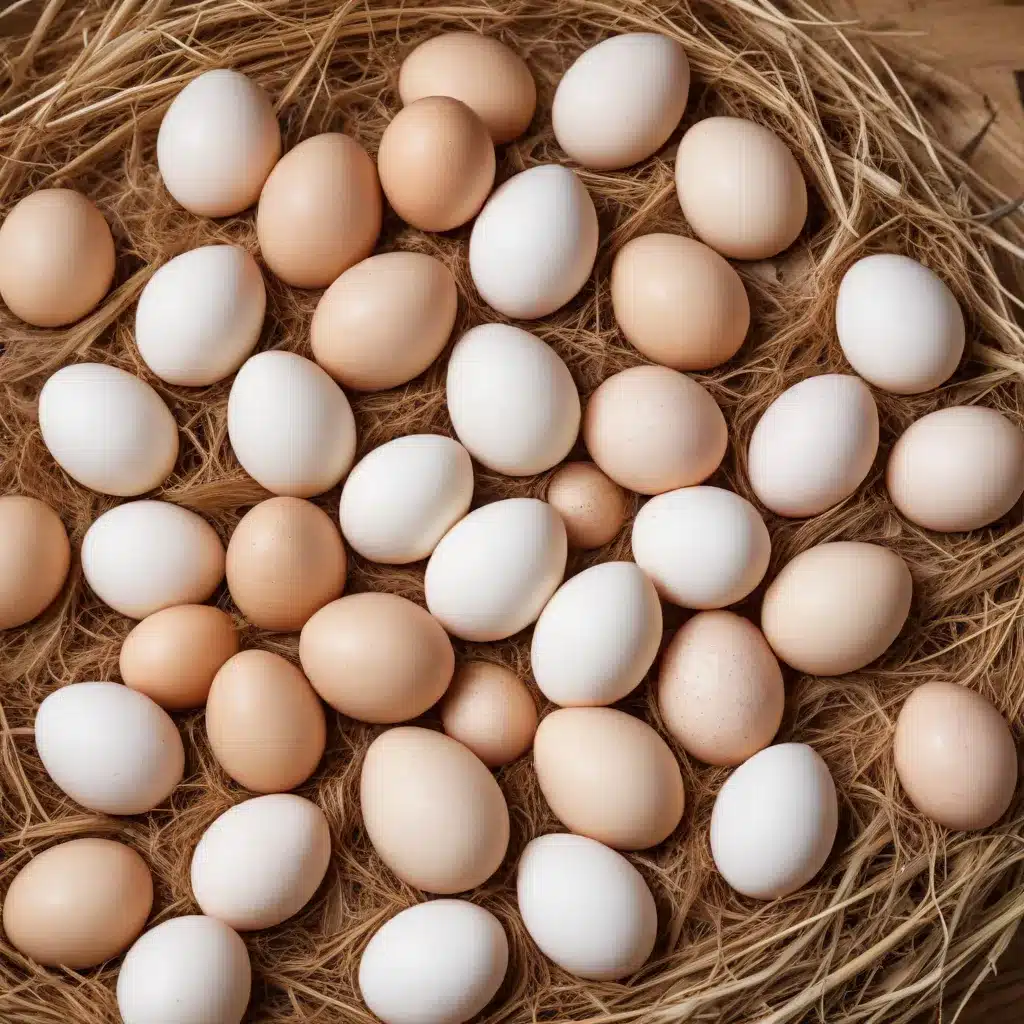
Avian Reproduction
As an experienced avian caretaker, I know that understanding the intricate details of avian reproduction is crucial for responsible breeding and hatching practices. Let’s dive into the fascinating world of avian reproductive anatomy, mating behaviors, and egg formation.
Avian Reproductive Anatomy
Birds possess a unique reproductive system adapted for their flying lifestyle. The female avian reproductive tract consists of an ovary and an oviduct, where the egg is formed and travels before being laid. The ovary contains thousands of tiny yolks, and only the left ovary and oviduct are fully developed in most species. As the yolk matures, it is released into the oviduct, where it is coated with albumen (egg white), membranes, and the eggshell.
The male reproductive system includes the testes, which produce sperm, and the cloaca, which serves as the common opening for the digestive, urinary, and reproductive systems. During mating, the male transfers sperm to the female through the cloaca, where it is stored in specialized sperm storage tubules in the female’s oviduct.
Mating Behaviors and Courtship
Avian mating behaviors vary widely across species, but they often involve elaborate courtship rituals. These may include vocalizations, dances, aerial displays, and physical interactions to attract a mate. The goal is to demonstrate fitness, health, and the ability to provide for offspring. Once a pair bond is established, the birds may remain together for a single breeding season or for life, depending on the species.
Egg Formation and Laying
As the yolk travels through the oviduct, it is coated with successive layers of albumen, membranes, and the eggshell. This process takes around 24 hours to complete. Birds typically lay one egg per day until the clutch (the full set of eggs) is complete. The number of eggs in a clutch varies widely, from a single egg in some species to over a dozen in others. Once the clutch is complete, the female begins incubating the eggs to start the embryonic development.
Egg Management
Proper egg management is essential for successful hatching and the production of healthy chicks. Let’s explore the key aspects of incubation, hatching, and nest monitoring.
Incubation Techniques
Incubation is the process of maintaining the optimal temperature, humidity, and other environmental conditions to allow the embryo to develop within the egg. This can be done naturally by the parent birds or artificially in an incubator. Careful monitoring of temperature, humidity, and air circulation is crucial for successful incubation.
Hatching Processes
As the embryo fully develops, the chick will begin to pip (break through) the eggshell. This hatching process can take several hours or even a day, as the chick uses its egg tooth to gradually break free. Providing the right conditions, such as sufficient oxygen and humidity, is essential for a successful hatch.
Nest Monitoring and Care
Closely observing the nesting behavior of parent birds is important for understanding their needs and ensuring the health and safety of the eggs and chicks. This includes monitoring for signs of distress, ensuring the nest remains clean and secure, and providing any necessary supplemental care or intervention.
Responsible Breeding Practices
Responsible avian breeding involves considering a range of factors, from genetics and nutrition to housing and environmental conditions. Let’s explore these key aspects in more detail.
Genetic Considerations
Genetic diversity is crucial for maintaining healthy avian populations. Careful selection of breeding pairs, considering factors like lineage, health, and desirable traits, can help avoid inbreeding and promote robust offspring. Responsible breeders also work to preserve endangered species by collaborating with conservation efforts.
Nutritional Requirements
A balanced, species-appropriate diet is essential for breeding birds. Ensuring that breeding pairs and their offspring receive the right mix of proteins, carbohydrates, fats, vitamins, and minerals is crucial for their overall health, egg production, and chick development.
Housing and Environment
The housing and environment provided for breeding birds play a significant role in their reproductive success. Factors such as adequate space, proper lighting, temperature control, and enrichment opportunities can all impact the birds’ comfort, stress levels, and breeding behaviors.
Avian Species Diversity
The world of birds is incredibly diverse, with a wide range of egg-laying species, many of which face conservation challenges. Let’s explore some of the notable examples.
Common Egg-Laying Birds
Chickens, ducks, geese, and turkeys are some of the most commonly known egg-laying birds. These domestic fowl are not only important for food production but also serve as popular pets and show birds. Responsible breeders work to maintain the health and welfare of these species.
Endangered Avian Species
Unfortunately, many avian species are facing threats to their survival, such as habitat loss, poaching, and climate change. From the majestic bald eagle to the elusive kiwi, numerous birds are classified as endangered or threatened. Responsible breeders collaborate with conservation organizations to help preserve these species through captive breeding and reintroduction programs.
Conservation Efforts
Across the globe, dedicated individuals and organizations are working tirelessly to protect and restore avian populations. These efforts involve habitat restoration, anti-poaching initiatives, public education, and the establishment of protected areas. Responsible breeders can contribute to these conservation efforts by supporting research, participating in breeding programs, and promoting awareness within their communities.
As an experienced avian caretaker, I hope this comprehensive guide has provided you with valuable insights into the fascinating world of avian reproduction and egg management. By embracing responsible breeding practices and supporting conservation efforts, we can ensure the continued success and diversity of our feathered friends. Remember, at Mika Birds Farm, we are committed to promoting the welfare and conservation of all avian species. Let’s work together to create a brighter future for our avian companions.


